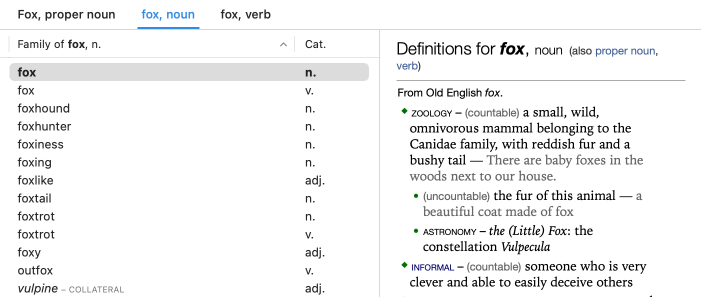Content of the Dictionary of Families
The dictionary of families presents all the words in the headword’s morpho-semantic family. A family consists of words that have a common morphological root and variations on a common meaning. The following example shows the family of the word fox, which includes compound words like foxhound and derived words like outfox.

Clicking a word in the list calls up its definition in the right-hand panel. You can move from one word to another using the up and down arrow keys to see the definitions for all the words in a given family. Click the column name in the title bar to sort the list alphabetically or by syntactic category.
This list may contain adjectives shown in italic followed by the note collateral, such as for the word vulpine. This adjective, meaning “relating to a fox” does not belong to the morphological family of fox, but their meanings are closely linked. Clicking the collateral note will open an article in the guides explaining the details of collateral adjectives.